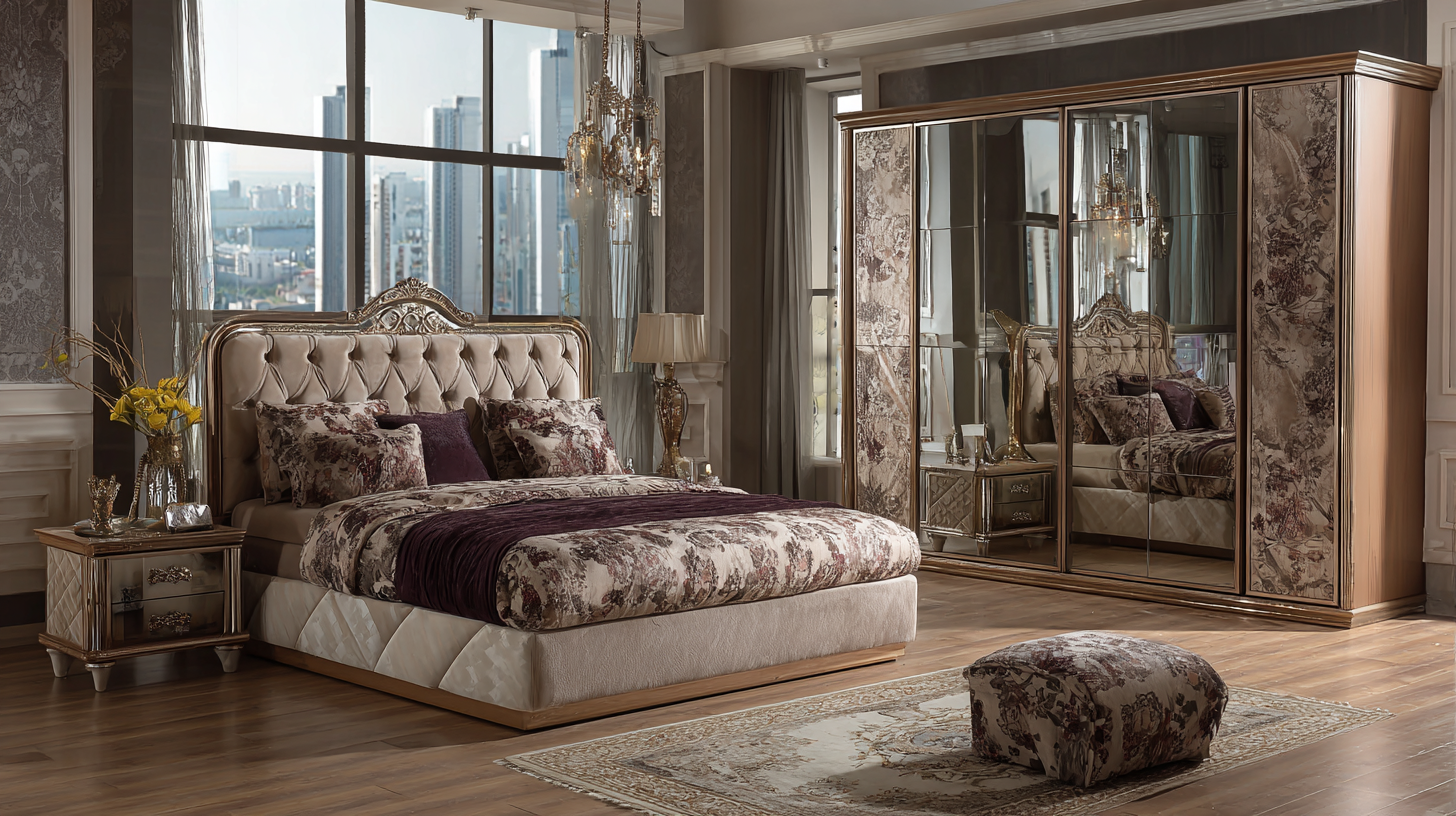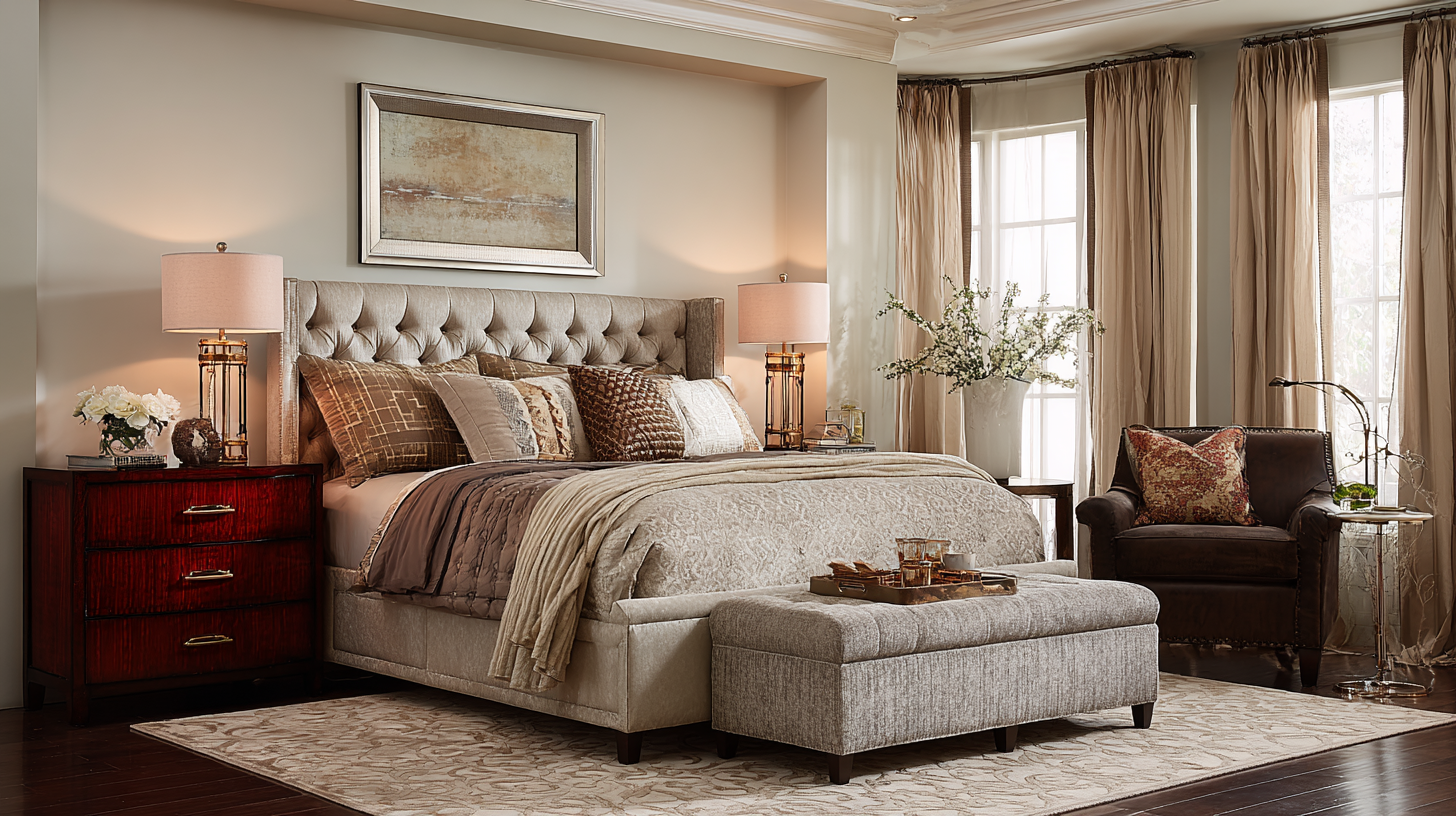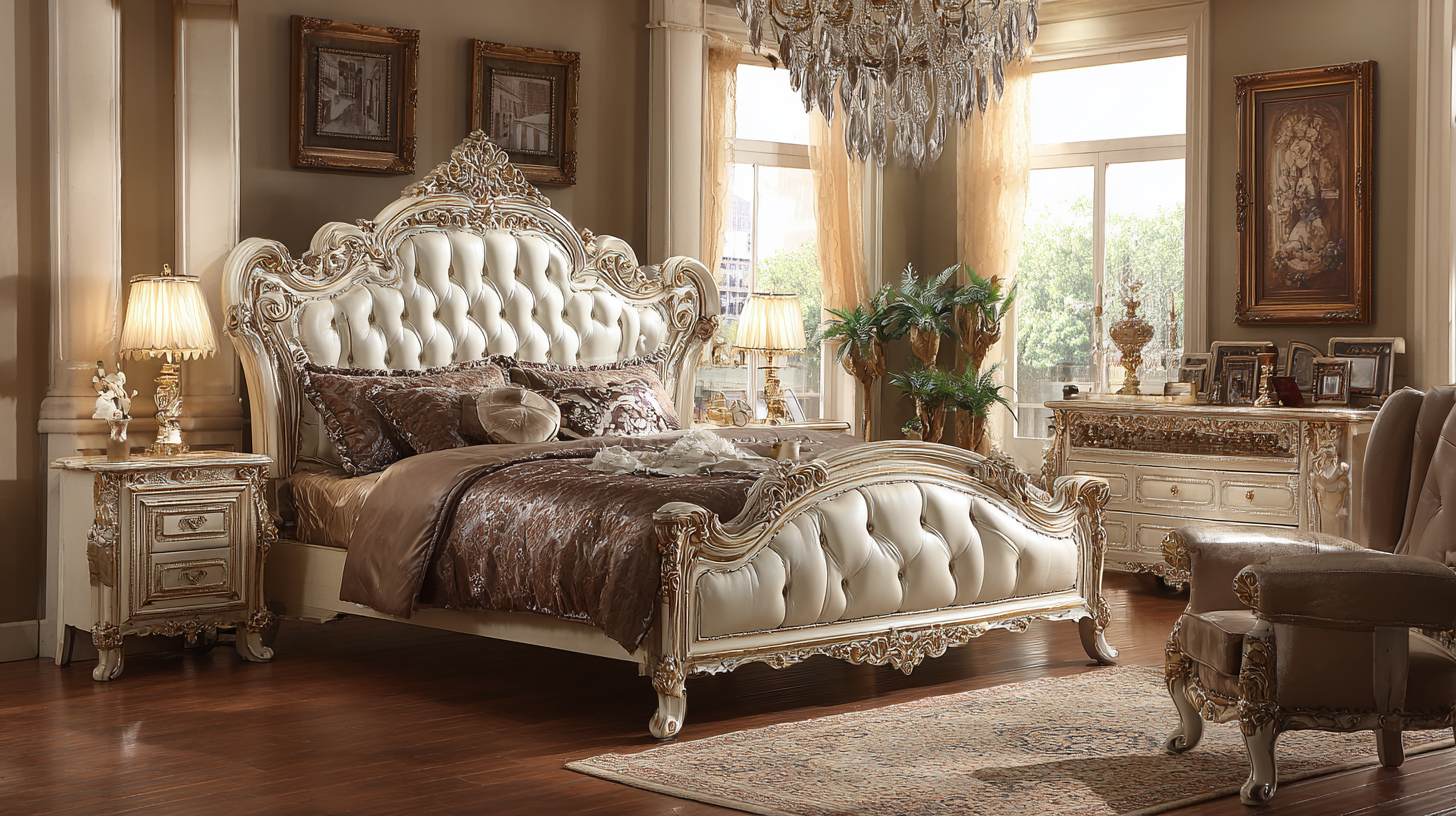Transform Your Space with Stunning Bedroom Furniture Sets for Every Style
The bedroom is often regarded as a sanctuary, a place for rejuvenation and relaxation, making the choice of bedroom furniture sets crucial for both aesthetic and functional purposes. According to the latest industry reports, the global bedroom furniture market is anticipated to reach USD 84 billion by 2025, driven by an increasing demand for stylish and practical solutions that reflect personal style and comfort. Whether you favor a contemporary minimalist look or a more traditional and ornate design, the right bedroom furniture sets can transform your space into a personal retreat. Incorporating elements such as versatile storage, ergonomic design, and sustainable materials can further enhance the appeal and usability of your bedroom. As consumers become more discerning, the importance of selecting the perfect furniture sets that cater to diverse tastes and trends cannot be overstated.

Explore the Latest Trends in Bedroom Furniture Sets for Every Aesthetic Preference
As the global home decor market continues to expand, reaching an impressive valuation of $802.26 billion in 2025 and projected to surpass $1 trillion by 2032, the demand for stylish bedroom furniture sets is more pronounced than ever. These sets not only cater to aesthetics but also play an essential role in enhancing the overall ambiance and functionality of personal spaces. Whether one prefers a modern minimalist approach or a more traditional style, the latest trends in bedroom furniture robustly reflect diverse aesthetic preferences that resonate with various consumer tastes.
Moreover, research indicates a notable emphasis on sustainable practices in furniture design. The integration of eco-friendly materials and customization options is gaining traction among manufacturers, ensuring that furniture sets not only delight the eye but also contribute positively to the environment. With the dining table market also on a growth trajectory, expected to rise from $8.68 billion in 2025 to $13.71 billion by 2032, it is evident that furniture design is evolving in tandem with consumer demands for both style and sustainability. As aesthetic decisions increasingly reflect our lifestyle choices, creating harmonious spaces through thoughtfully selected furniture becomes paramount.
Understand Key Factors Influencing Bedroom Furniture Choices: Size, Style, and Material
When selecting bedroom furniture, understanding the key factors—size, style, and material—is essential for creating a harmonious and functional space. According to the American Home Furnishings Alliance, nearly 70% of homeowners prioritize both the aesthetic appeal and functionality of their bedroom furniture when making purchasing decisions. Therefore, it’s crucial to measure your room before shopping. Ensuring that furniture fits well not only enhances comfort but also prevents overcrowding, which can diminish a room’s attractiveness.
Tips: Always have a floor plan handy to visualize furniture placement. Aim for at least 24 inches of walking space around the bed, according to industry standards. This can dramatically improve movement and overall comfort in your bedroom.
Style plays a pivotal role in expressing personal taste. Current trends show a surge in minimalist and Scandinavian designs, favored for their clean lines and simplicity. However, eclectic styles remain popular as well, allowing individuals to mix and match different pieces creatively. Material choice impacts both aesthetics and durability. High-quality woods, metals, and fabrics can make a significant difference in the longevity of your furniture. According to a report from IBISWorld, nearly 30% of consumers now consider sustainability in their materials, which can further influence their choices.
Transform Your Space with Stunning Bedroom Furniture Sets for Every Style
| Furniture Set Name | Size (King/Queen/Twin) | Style | Material | Price Range |
|---|---|---|---|---|
| Modern Sleek | King | Modern | Wood | $1200 - $1500 |
| Rustic Charm | Queen | Rustic | Reclaimed Wood | $800 - $1200 |
| Elegant Classic | Twin | Traditional | Solid Oak | $1000 - $1300 |
| Minimalist Zen | Queen | Minimalist | Bamboo | $950 - $1200 |
| Vintage Elegance | King | Vintage | Pine | $1100 - $1400 |
Discover How Bedroom Furniture Affects Sleep Quality: The Science Behind Design
The design and arrangement of bedroom furniture play a crucial role in sleep quality, a fact supported by various scientific studies. A well-designed bedroom not only enhances the aesthetic appeal but also promotes relaxation and tranquility, which are essential for a good night's sleep. For instance, a comfortable mattress and supportive bed frame can significantly reduce sleep disturbances, while the strategic placement of furniture can improve airflow and create a calming atmosphere.

Tips for optimizing your bedroom space include selecting furniture made from natural materials, which can foster a healthier sleeping environment by reducing toxic emissions. Additionally, maintaining an organized space free of clutter can help alleviate stress, facilitating a quicker transition to sleep. Incorporating adjustable lighting can also make a transformative difference; soft, warm lights can create a peaceful ambiance, encouraging relaxation as you prepare for rest.
Ultimately, understanding the science behind bedroom design empowers individuals to create a personal sanctuary that enhances sleep quality. Thoughtfully chosen furniture sets and intentional layouts can lead to deeper, more restorative sleep, proving that the right environment is pivotal for overall well-being.
Find Out How to Mix and Match Furniture Styles for a Unique Bedroom Look
Mixing and matching furniture styles allows you to create a unique and personalized bedroom look that reflects your individuality. As the trend shifts away from matching furniture sets, many homeowners are embracing an eclectic aesthetic that combines pieces from various eras and styles. According to recent design surveys, more than 70% of interior designers believe that mismatched furniture contributes to a relaxed and inviting atmosphere. This approach not only adds character but also enables you to curate a space that tells your story.

Tips:
To achieve a cohesive look while mixing styles, focus on a unifying element, such as color or texture. For instance, select a few main colors that run through your bedding, curtains, and furniture to create harmony. Incorporating vintage or antique pieces can provide depth and history to your bedroom while enhancing its overall aesthetic. Remember, layering different materials, like wood with metal accents, can also create visual interest without overwhelming the space.
Moreover, don’t shy away from incorporating trendy design influences. The popularity of styles like midcentury modern or Scandinavian provides endless options for creating layered looks. Utilizing various patterns or integrating statement rugs can also unify different furniture pieces effectively, helping you achieve a curated, designer-inspired space that feels both chic and personal.
Analyze Market Data: The Rise of Eco-Friendly Materials in Bedroom Furniture Sets
The bedroom furniture market is witnessing a notable shift towards eco-friendly materials, driven by increasing consumer awareness about sustainability and environmental impact. A recent market analysis highlights a growing demand for furniture made from renewable resources, as consumers are prioritizing products that not only enhance their living spaces but also contribute positively to the environment. The rise of eco-consciousness in design is reshaping consumer preferences, with furniture crafted from sustainable woods, recycled metals, and non-toxic finishes gaining traction.
According to market forecasts, the UAE furniture market is projected to reach USD 4.70 billion by 2030, largely due to the growing demand in both home and hospitality sectors. This indicates a robust opportunity for manufacturers who are adopting sustainable practices and materials in their production processes. Furthermore, the camping furniture market is also showing promising growth, anticipated to hit USD 6.89 billion by 2035, as more consumers are opting for outdoor adventures that necessitate portable and environmentally friendly furniture options. This trend underscores a broader movement within the furniture industry towards integrating sustainability into product offerings across various market segments.
Market Analysis: The Rise of Eco-Friendly Materials in Bedroom Furniture Sets
Related Posts
-

7 Essential Tips for Selecting Contemporary Furniture for Your Home
-

Unconventional Dining Table and Chairs Alternatives to Elevate Your Space
-

Understanding Challenges with Wood Dining Chairs: A Deep Dive into Common Consumer Issues and Industry Trends
-

7 Essential Tips for Choosing the Perfect Marble Dining Table for Your Home
-

What is the Impact of Best Modern Dining Sets on Global Home Furnishing Trends?
-

Finding Quality Suppliers for the Best Outdoor Sofa in a Competitive Market